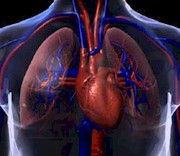Diseases of the heart valves are grouped according to which valve or valves are involved and the amount of blood flow that is disrupted by the problem. Diseases of the tricuspid and pulmonary valves are fairly rare.
The tricuspid valve regulates the blood flow from the heart's upper-right chamber (the right atrium) to the lower-right chamber (the right ventricle).
Two diseases of the tricuspid valve are regurgitation and stenosis.
Tricuspid Regurgitation
Tricuspid regurgitation is also called tricuspid insufficiency or tricuspid incompetence. It means there is a backflow of blood from the lower-right chamber (the right ventricle) to the upper-right chamber (the right atrium), either because of a damaged tricuspid valve or an enlarged right ventricle. Blood is pushed back into the major veins instead of moving forward into the lungs, where it can pick up oxygen.
What causes tricuspid regurgitation?
The main cause of tricuspid regurgitation is an enlarged right ventricle. This may be caused by any disorder that causes right ventricular failure, such as increased pressure in the pulmonary artery. Damage to the tricuspid valve may be caused by rheumatic fever.
What are the symptoms?
People with tricuspid regurgitation usually have no symptoms. For patients who have high blood pressure in the lungs (pulmonary hypertension) as well as tricuspid regurgitation, signs and symptoms may include
- Swelling of the stomach area, feet, and ankles
- Fatigue
- Weakness
- Decreased urine output
- Yellowing of the skin (jaundice) and fluid in the stomach area that may be associated with liver problems (ascites)
Most people can put up with the symptoms of tricuspid regurgitation for years. If you have tricuspid regurgitation, you should see your doctor to find out if you have any underlying conditions that may contribute to the disease (such as high blood pressure in your lungs). Surgical repair or replacement of the tricuspid valve may also be needed.
Tricuspid Stenosis
Tricuspid stenosis is a narrowing or blockage of the tricuspid valve. Tricuspid stenosis causes the right atrium to become enlarged, while the right ventricle does not get enough blood.
What causes tricuspid stenosis?
Tricuspid stenosis is usually associated with rheumatic fever. Often, people with tricuspid stenosis also have mitral stenosis. You are rarely born with tricuspid stenosis, and it is not passed down through family members.
What are the symptoms?
The only symptoms of tricuspid stenosis are fatigue and the pain of an enlarged liver. Symptoms are rarely severe enough to require valve surgery.
Return to main topic: Valve Disease
See also on this site:
Valve Repair or Replacement Surgery
See on other sites:
MedlinePlus
https://medlineplus.gov/ency/article/000169.htm
Tricuspid Regurgitation
Updated August 2016



